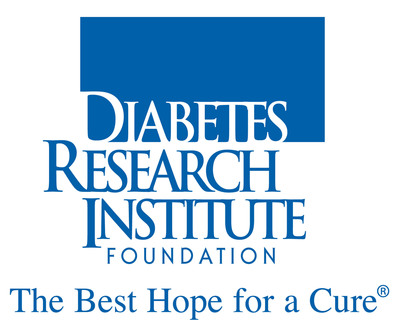Lowering cholesterol with medications is a total waste of time
science
Concerns that saturated fats have been unfairly ‘demonised’ prompts Government advice re-think
Saturated fat has been wrongly demonised because of poor science
Source: Concerns that saturated fats have been unfairly ‘demonised’ prompts Government advice re-think
Origins and evolution of the Western diet: health implications for the 21st century
ABSTRACT
There is growing awareness that the profound changes in the envi- ronment (eg, in diet and other lifestyle conditions) that began with the introduction of agriculture and animal husbandry ?10 000 y ago occurred too recently on an evolutionary time scale for the human genome to adjust. In conjunction with this discordance between our ancient, genetically determined biology and the nutritional, cultural, and activity patterns of contemporary Western populations, many of the so-called diseases of civilization have emerged. In particular, food staples and food-processing procedures introduced during the Neolithic and Industrial Periods have fundamentally altered 7 cru- cial nutritional characteristics of ancestral hominin diets: 1) glyce- mic load, 2) fatty acid composition, 3) macronutrient composition, 4) micronutrient density, 5) acid-base balance, 6) sodium-potassium ratio, and 7) fiber content. The evolutionary collision of our ancient genome with the nutritional qualities of recently introduced foods may underlie many of the chronic diseases of Western civilization. Am J Clin Nutr 2005;81:341–54.
DOWNLOAD: Origins and evolution of the Western diet: health implications for the 21st century
The Soft Science of Dietary Fat
Mainstream nutritional science has demonized dietary fat, yet 50 years and hundreds of millions of dollars of research have failed to prove that eating a low-fat diet will help you live longer
DOWNLOAD: The Soft Science of Dietary Fat
LDL Cholesterol: “Bad” Cholesterol, or Bad Science?
First Type 1 Diabetes Patient in Europe is Free from Insulin Therapy after Undergoing Diabetes Research Institute’s BioHub Transplant Technique
A Low Carbohydrate Diet in Type 1 Diabetes: Clinical Experience – A Brief Report
Jørgen Vesti Nielsen, Eva Jönsson, Anette Ivarsson
Department of Medicine, Blekingesjukhuset, Karlshamn, Sweden
ABSTRACT
Due to failure to achieve control twenty-two patients with type 1 diabetes with sympto- matic fluctuating blood glucose started on a diet limited to 70-90 g carbohydrates per day and were taught to match the insulin doses accordingly. The caloric requirements were covered by an increased intake of protein and fat. The purpose was to reduce the blood glucose fluctuations, the rate of hypoglycaemia and to improve HbA1c.
DOWNLOAD: Low-carb in type 1 diabetes
Dietary Carbohydrate, Protein and Fat for People With Glucose Metabolism Disorders. Just What is Optimal?
Dietary Carbohydrate, Protein and Fat for People With
Glucose Metabolism Disorders. Just What is
Optimal?
A collection of research, studies, science, facts, and opinions.
Dr Katharine Morrison.
February 2005.
DOWNLOAD: Dietary Carbohydrate, Protein and Fat for People With
Clinical Studies on Chromium Picolinate Supplementation in Diabetes Mellitus—A Review
ABSTRACT
Chromium (Cr) picolinate (CrPic) is a widely used nutritional supplement for optimal insulin function. A relationship among Cr status, diabetes, and associated pathologies has been established. Virtually all trials using CrPic supplementation for subjects with diabetes have demonstrated beneficial effects. Thirteen of 15 clinical studies (including 11 randomized, controlled studies) involving a total of 1,690 subjects (1,505 in CrPic group) reported significant improvement in at least one outcome of glycemic control. All 15 studies showed salutary effects in at least one parameter of diabetes management, including dyslipidemia. Positive outcomes from CrPic supplementation included reduced blood glucose, insulin, cholesterol, and triglyceride levels and reduced requirements for hypoglycemic medication. The greater bioavailability of CrPic compared with other forms of Cr (e.g., niacin-bound Cr or CrCl3) may explain its comparatively superior efficacy in glycemic and lipidemic control. The pooled data from studies using CrPic supplementation for type 2 diabetes mellitus subjects show substantial reductions in hyperglycemia and hyperinsulinemia, which equate to a reduced risk for disease complications. Collectively, the data support the safety and therapeutic value of CrPic for the management of cholesterolemia and hyperglycemia in subjects with diabetes.
DOWNLOAD STUDY HERE: chromium picolinate
The Soft Science of Dietary Fat
Mainstream nutritional science has demonized dietary fat, yet 50 years and hundreds of millions of dollars of research have failed to prove that eating a low-fat diet will help you live longer. Indeed, the history of the national conviction that dietary fat is deadly, and its evolution from hypothesis to dogma, is one in which politicians, bureaucrats, the media, and the public have played as large a role as the scientists and the science. It’s a story of what can happen when the demands of public health policy–and the demands of the public for simple advice–run up against the confusing ambiguity of real science.



